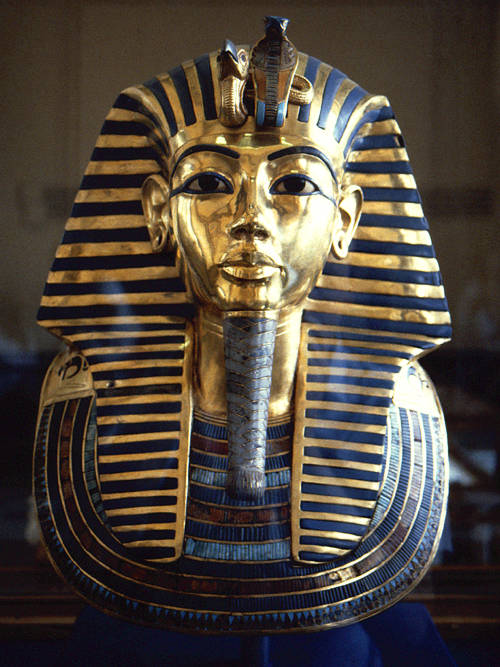This is an old revision of this page, as edited by Ihcoyc (talk | contribs) at 19:13, 12 June 2003 (link: curse). The present address (URL) is a permanent link to this revision, which may differ significantly from the current revision.
Revision as of 19:13, 12 June 2003 by Ihcoyc (talk | contribs) (link: curse)(diff) ← Previous revision | Latest revision (diff) | Newer revision → (diff)Tutankhamun was Pharaoh of Egypt in the 14th century BC, from 1333 BC to 1323 BC, during the period known as the New Kingdom.

Tutankhamun (or King Tut) is perhaps best known to modern westerners as the only pharaoh to have his intact, unplundered tomb discovered. However, he is historically important as well.
Tutankamun's parentage is uncertain. An inscription calls him a king's son, but it is debated which king was meant. Most scholars consider that he was probably a son either of Amenhotep III (though probably not by his Great Royal Wife Tiye), or of Amenhotep III's son Amenhotep IV (also known as Akhenaton).
Tutankhamun was married to Ankhesenpaaten, a daughter of the great King Akhenaton, and he was responsible for reversing much of his father-in-law's Amarna revolution, in which Akhenaton attempted to supplant the existing priesthood and gods with a god of his own devising, Aten.
Tutankhamun, still a young boy and probably under the influence of two older advisors, restored the old pantheon of gods and their temples, granted the traditional privileges back to their priesthoods, and moved the capital back to Thebes.
Tutankhamun died at the age of 18 of unknown causes. On his mummy there is evidence of an injury to his head, which apparently had time to partially heal before his death.
Tutankhamun was briefly succeeded by the older of his two advisors, Ay, and then by the other, Horemheb, who obliterated most of the evidence of the rules of Akhenaton, Tutankhamun, and Ay.
Howard Carter (paid by Lord Carnarvon) discovered Tutankhamun's tomb on November 4, 1922 near the entrance to the tomb of Ramses VI, setting off a renewed interest in the modern world in all things Egyptian. After many weeks of careful excavation, on February 16, 1923 Carter opened the burial chamber and first saw the sarcophagus of Tutankhamun. This tomb was unusual since it had remained untouched by grave robbers and was full of artifacts.
For many years, rumors of a "curse" (probably fueled by newspapers at the time of the discovery) persisted, emphasizing the early death of some of those who had first entered the tomb. However, a recent study of journals and death records indicates no statistical difference between the age of death of those who entered the tomb and those on the expedition who did not. Indeed, most lived to past 70.
External link
- End Paper: A New Take on Tut's Parents by Dennis Forbes (KMT 8:3 . FALL . 1997 � KMT Communications)